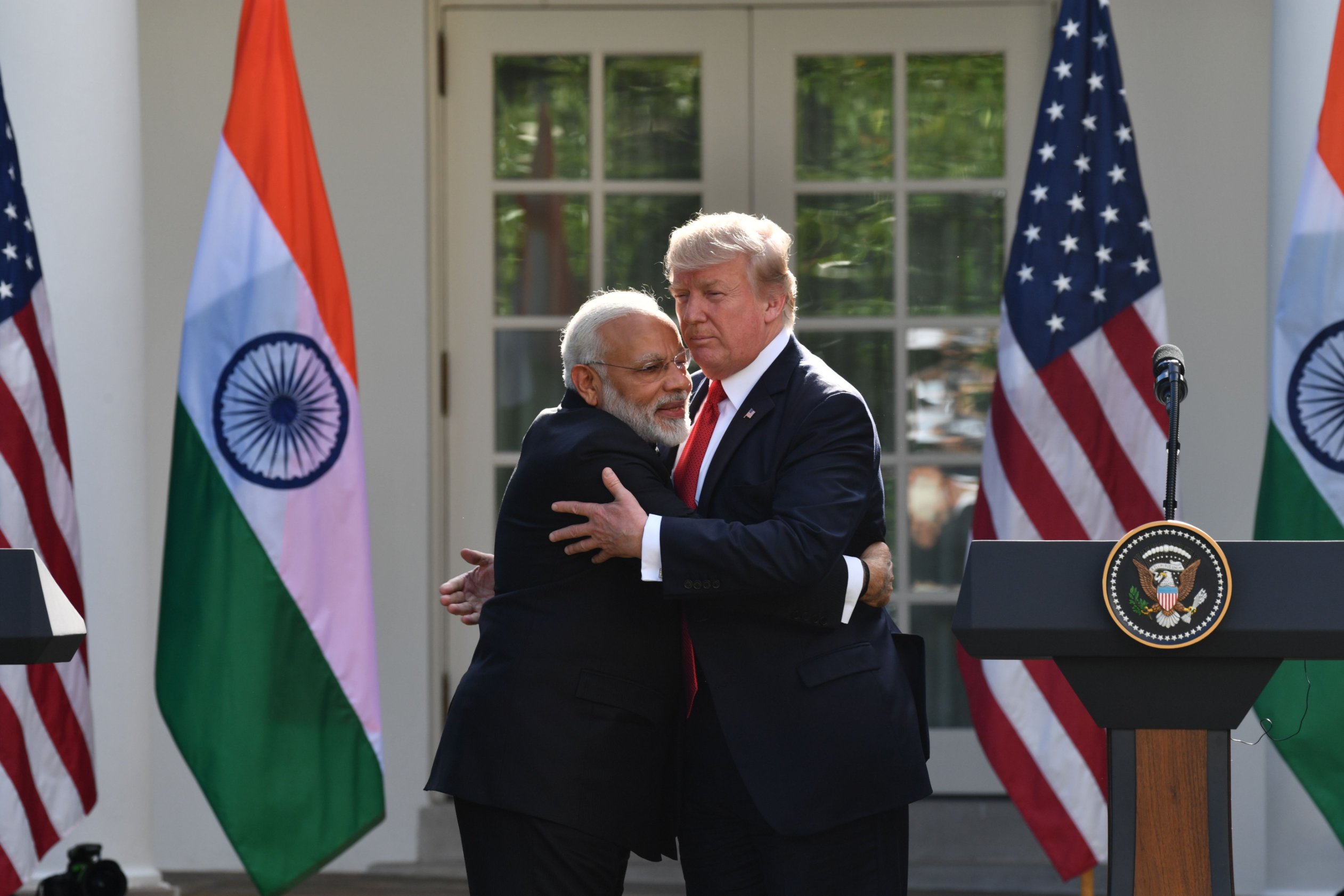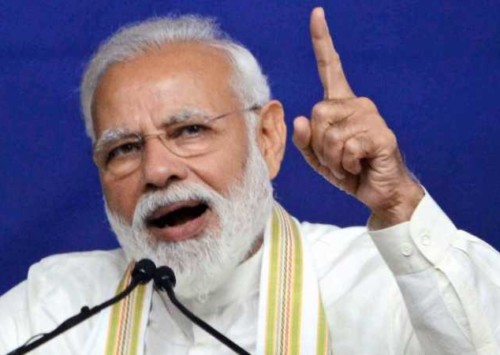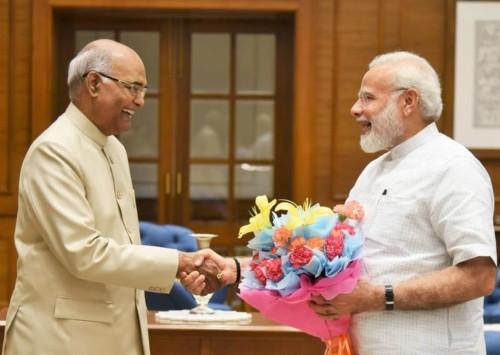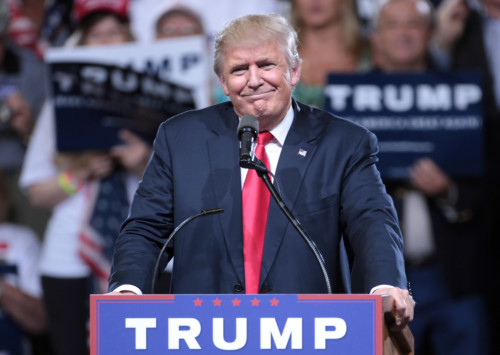Donald Trump comes calling
United States President Donald Trump’s visit is expected to be high on hype, but low on content. And that is not too bad for India.
On Monday, two of the best showmen of global politics will again share a stage under the glare of, not just thousands of fans, but also the entire global media. One of the first activities that the US President will be involved in, upon arrival in Ahmedabad in Gujarat, would be with Indian Prime Minister Narendra Modi. The two will address a capacity crowd at Motera stadium, which is the world’s biggest cricket stadium with seating for 125,000 persons. The two will also jointly inaugurate the recently renovated stadium.
Trump is so excited about the prospect of a full house that he has been tweeting about being welcomed by 5-7 million persons, almost three-fourths of the city’s population. Nonetheless, the pomp and the show will continue beyond Ahmedabad, where giant hoardings with pictures of Trump and Modi will welcome the President at the airport and all along the streets.
The pomp and show will follow Trump to Agra and New Delhi where again a very high profile welcome reception has been planned with the President and Prime Minister of India. There would also be the other social photo-ops especially with the US First Lady Melania Trump as well as their daughter Ivanka and her husband Jared Kuchner.
And when finally Modi and Trump get down to discussing business and not just the business of trade and commerce, but also bilateral ties and global issues, they will find it hard to display the same bonhomie that has been the public face of their relationship. Trump has already been making some noises about how he feels that India has been ‘ill-treating’ the US and taking ‘undue’ advantage in bilateral trade through ‘unequal’ trade terms. In many ways, Trump set the tone for the visit weeks before his arrival when he reclassified India from being a developing country to a developed nation as per the US trade norms. The reasons given for his bizarre move were fairly outrageous and ridiculous, as is customary with practically every decision that Trump has taken since becoming President over three years ago. He cited India’s membership of the G20 group of leading economies of the world as well as India’s fast clipped growth over the past two decades or so but ignoring the fact that the Indian engine has run out of steam.
He also conveniently overlooked the harsh reality of India’s highly unequal growth as the country may be home to many billionaires and multi-millionaires, but still has over 350 million of the world’s poorest people, nearly as much as all other countries combined. Trump’s tunnel-vision focus on import tariffs and trade balances means that he wants one-sided deals where all other countries open their markets for the US exports and curb their own exports to the world’s biggest and one of the richest nations. Trump says he is unhappy about the trade deficit with India, which stood at over USD 27 billion in 2017 on total bilateral trade of USD 126 billion.
In this context, it is but natural and indeed welcome that the two sides are nowhere near agreement on the proposed US-India Free Trade Agreement. The differences are numerous and wide, almost unbridgeable, at least if the Indian government is determined to protect Indian interests rather than give in to Trump to maintain the semblance of a harmonious relation.
Besides asking India to slash its import tariffs and buy many more American products, Trump is also keen to push the two key pillars of the US economy – Big Tech and Big Pharma. On both the counts, he has been roundly critical of Indian stance and wants India to align its intellectual property rights law with the law in the US, even though the Indian law is perfectly compatible with the international norms and is in line with India’s commitment made under the World Trade Organisation agreement.
Egged on, mainly by the powerful Big Pharma lobby, Trump has asked India to strengthen its IPR laws. The US is also unhappy about the recent changes to the data security and hosting regulations as well as the e-commerce norms in India as it feels that the new rules hurt the US companies in these domains.
Modi would do well to reject outright any attempts by his guest to extract a concession on these sensitive issues. While India can and should lower the import duties on alcohol and luxury products, as these industries do not merit any further protection, it would be suicidal for Indian farmers and rural population per se if India were to lower the levies on agriculture and dairy product imports.
With barely over two million farmers, less than 0.5 pc of the US population is dependent upon farming for a livelihood. Yet, the US spends over USD 50 billion each year in subsidies to them. In contrast, for over 800 million persons dependent upon farming, India spends a fraction of the US in subsidies. Rural incomes in India have been depressed for nearly a decade and high debts, arising due to failed crops or lack of buyers and difficulties in access to the markets, lead thousands of farmers to commit suicide across India each year.
It might be easier for the government to give concessions on data security rules as well as e-commerce as these concern large Indian companies, many of them profitable with tens of billions of dollars in revenues and which should be left to fend for themselves in a globalised market. It is hard to see what assistance the Indian government can provide to Mukesh Ambani, chairman of Reliance Industries, whose net worth puts him in the league of billionaires like Bill Gates and Warren Buffet.
It is not just over the business that the two leaders will have to face a difference of opinion. Modi will be pressured privately and perhaps even publicly, to curtail defence ties with Russia and to cancel the deal to buy S400 missile defence system from Moscow. Trump will also force Modi to harden India’s stance over Iran, as the US President tries to push Tehran into global isolation.
On both these issues, India’s interests definitely do not coincide with those of the US and New Delhi must resist, if not openly oppose, Washington DC’s continuous pressure to a total turnaround in policy. India also needs to push the US to go slow in its attempts to reach a ceasefire agreement with the Taliban in Afghanistan. India should also openly demand a seat on the table if and when such a deal is being negotiated. But most of all, India needs to convey to Trump that a US withdrawal from Afghanistan and any kind of deal with the Taliban would be inimical to Indian interests.
That’s quite a few difficult issues which are likely to impact on the friendly ties that the two leaders share and their mutual admiration. Can Modi resist the temptation of announcing a hyped-up deal with the US, in order to grab global eyeballs, and instead stand firm to Trump and his twisted vision and thoughts.













